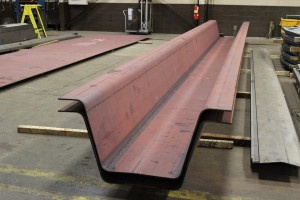The process of rolling steel is more complicated than it might seem at first. Depending on the process used, different factors need to be considered. For example, cold rolling a part increases its brittleness which can cause it to break under the wrong conditions. When hot rolling, other factors need to be considered such as how to avoid or correct transformations in the material or thermal distortion.
AT&F has a PhD metallurgist on staff due to the complexities of the work we do including hot and cold rolling. The first thing a metallurgist will do to determine whether to hot or cold roll is to find what code is required for the part and then the strain of the particular material being rolled. From there he can determine if hot rolling is required or if cold rolling is acceptable.
Hot forming adds cost to the product because it adds additional time and processing to get the part into the furnace and heat it to the required temperature. After the part has been heated to the required temperature, many times it will then need to be actively maintained during the forming process.
AT&F is a full service steel solutions provider. We are a family owned business 76 years in business and engineering and metallurgy experts in house.


 BIG with Press Brake Formed Steel Tub Girder Technology
BIG with Press Brake Formed Steel Tub Girder Technology